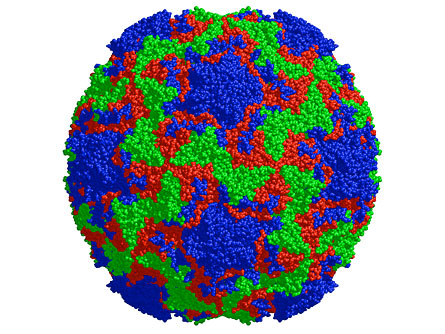Sequencing virus genome to cure the common cold
Finds could lead to new drugs and vaccines
- More than 2 years ago
Researchers have sequenced the genomes of all 99 known strains of human rhinovirus — a virus that causes the common cold. The work provides new information about how the strains are related and how to predict their virulence, according to a report online February 12 in Science. Decoding the genomes of rhinovirus strains is the first step toward developing vaccines against the common cold, or toward developing drugs that kill the viruses.

“Most people think of colds as just a nuisance, but colds can be debilitating for very young people, old people or people with asthma,” says study coauthor Stephen B. Liggett, a pulmonologist and molecular geneticist at the University of Maryland School of Medicine in Baltimore.
Previous efforts to cure the common cold were hampered by the sheer number rhinovirus strains, and until now only about a third of the strains had been sequenced. “Now we have the full picture,” says Ann Palmenberg, a molecular virologist at the University of Wisconsin–Madison and coauthor of the study.
By assembling the rhinovirus family tree and comparing the genetic codes of the different virus strains that cause colds, Palmenberg and her colleagues were able to organize the strains into about 15 groups. Now researchers may be able to design a specific antiviral drug or vaccine for each group.
“This research will help us to aim our preventative and treatment measures more accurately,” comments E. Kathryn Miller, an allergist and immunologist at the Monroe Carell Jr. Children’s Hospital at Vanderbilt Medical Center in Nashville.
Although sorting the rhinoviruses into 15 groups helped to narrow the field, drug researchers still have to aim at a moving target, the study suggests. In addition to the 99 previously known strains obtained from a virus reference library, the researchers also sequenced the genomes of 10 samples obtained from patients with colds. These samples had amassed mutations, which suggest that the rhinovirus genome changes. Tracing the rhinovirus lineage also showed that strains were able to exchange genetic information, recombining to create new strains.
Researchers compared the strains with the genomes of other viruses, including the poliovirus, and identified a particular stretch of sequence that may help predict whether a rhinovirus strain is virulent. The team also found that rhinoviruses that plague humans use a molecular shortcut to start making their own proteins quickly, “which is likely why people feel sick soon after infection,” Palmenberg says.
To better understand how the viruses mutate and recombine over a cold season, the team plans to sequence rhinoviruses from a larger number of patients. “This will help us to identify which areas of the human rhinovirus genome change and which stay the same — which will help us to design new therapeutics,” Palmenberg says.







